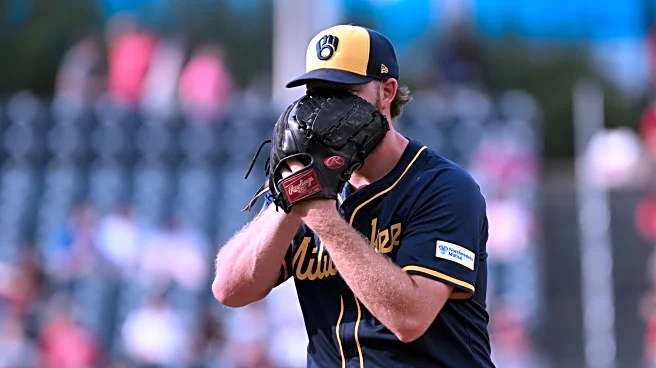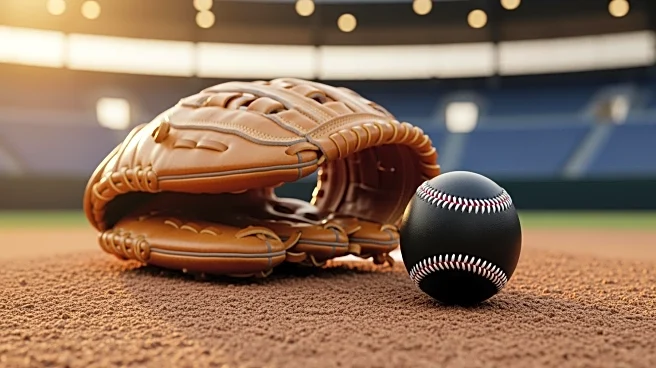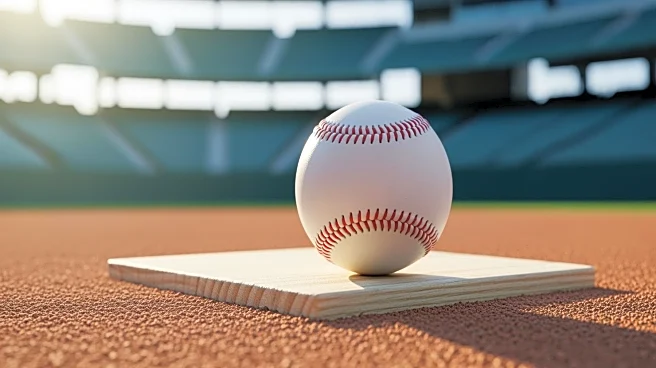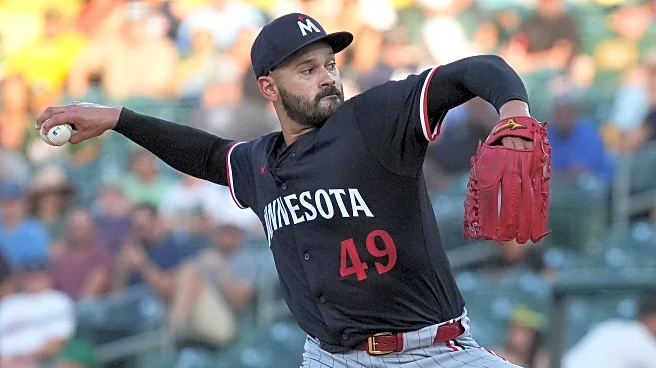According to Detroit Tigers’ GM Jeff Greenberg, the team is “going to prioritize pitching” this winter. There’s a lot of logic there; outside of Tarik Skubal, the starting rotation has some question marks
and the bullpen needs both quantity and quality. Kyle Finnegan leads their free agent departures, while Chris Paddack, Tommy Kahnle, and Rafael Montero all hit free agency after they threw innings in 2025. too. For now though, let’s just consider the rotation.
A rotation of Skubal, Reese Olson, Casey Mize, Jack Flaherty and Troy Melton is ok on talent, but very shallow. Keider Montero would be next man up, and after that, there isn’t much of note. Jackson Jobe’s Tommy John surgery will keep him sidelined through the summer and there aren’t many prospects close to the majors to help out, either. Sawyer Gipson-Long should be better with an offseason under his belt following his brief return from Tommy John, but remains unproven as a depth option. He also has all his options remaining and can be stashed in Toledo, while Montero is down to his final option year. A solid starter to deepen the whole group and guard against injury is a smart addition. The trick is finding one who fits the bill and isn’t a downgrade for the rotation.
Dating back to his tenure with the San Francisco Giants, Scott Harris has tended towards short contracts for rebounding starting pitchers. We’ve seen Jack Flaherty and Alex Cobb fit that MO; his previous contracts for Kevin Gausman and Carlos Rodon do, too. He’s shown no propensity for pursuing the top shelf free agent starters in his career.
This year, there are three starting pitchers in particular who fit this style of deal: Michael King, Zac Gallen, and Brandon Woodruff. Broadly speaking, they’re in pretty similar situations. They all received a qualifying offer and are projected for a 1 or 2 year “pillow” contract around $20-25M per season. It’s feasible, in fact it’s likely, that all three accept the qualifying offer to stay with their home teams.
Furthermore, all three have been elite pitchers in the recent past but had rough 2025 seasons. Gallen was entirely healthy but posted his worst season of the 2020s, Woodruff was great in a shortened season but did it in a way models don’t really trust, and King was just hurt on and off all year. Any of these would add upside and depth similar to Flaherty’s first contract with Detroit.
Let’s look at these three more closely, and then we’ll briefly break down the other options available. The situation is going to remain murky until the final qualifying offer decisions are made on Tuesday, so this is just a first look at the market, and three pitchers that seem to fit the Tigers budget.
Brandon Woodruff
Milwaukee’s longtime co-ace with Corbin Burnes is hitting free agency at a weird time. In some ways, Woodruff’s 2025 was the best he could have hoped for. Coming off of Tommy John in late 2023, Woodruff threw 64.2 innings with career bests in K% and BB%. His 3.20 ERA and 3.17 FIP were both excellent. It was a small sample, but from a bird’s eye view, it looked like vintage Woodruff. He even had his pinpoint command in good form.
However, digging a little deeper suggests pumping the brakes a bit could be wise. The biggest pink flag is velocity, of course. After sitting in the mid to upper 90s before his surgery, Woodruff averaged 93.0 mph this year. A decline of almost 3 mph is concerning. What makes this especially weird is that stuff traditionally comes back well before command after Tommy John. Given Woodruff is already 32, chances are he only has one chance at a long contract. The expectation is that he’ll sign a pillow contract now, shows he’s fully healthy, and goes big next year.
Woodruff’s excellent track record can’t be ignored, though. This is a top-20 pitcher of the last decade who just put up 1.8 fWAR in a third of a season; prorate that out and you’re talking about Cy Young candidacy. Doubting Woodruff feels like a decision that’s one layer too deep; Woodruff’s a stud who put up great numbers last year with diminished stuff. What happens when he’s fully healthy?
Michael King
King is the riskiest of the three arms here. Nobody can argue the talent – his career 3.24 ERA and 27.0% strikeout rate speak for themselves – but most of that production has come as a Swiss army knife swingman between injuries. He started as a multi-inning buzzsaw with the New York Yankees, then was traded to San Diego in the Juan Soto trade. 2024 was his first as a full-time starter, and it was excellent. His 2.95 ERA and 3.33 FIP over 173.2 innings had him among the best in baseball last year. The only major concern seemed to be if he could consistently stay healthy after so many years in the bullpen.
Unfortunately, he couldn’t, and every major stat regressed last year. A shoulder and knee injury limited him to 73.1 uninspiring innings. King’s velocity held steady but his strikeout, walk, and home run rates were all worse than his career averages. A career low BABIP helped his ERA stay respectable at 3.44, but higher hard hit and barrel rates suggest that probably was more luck than skill.
The upside is pretty obvious here. A full year healthy and working with Chris Fetter on his recent homeritis could easily net a top 30 or so starting pitcher. King is also the most volatile of this list, though, and his long injury history creates even more concern than your typical bounce back pitcher contract.
Zac Gallen
Gallen’s main selling point is durability. Since 2022, only two pitchers have thrown more innings. Gallen wasn’t a 5th starter grinding out 6 innings with 4 runs to keep his team in the game, either. From 2022-2024, Gallen quietly posted an ERA and FIP in the 3.20s with better than average strikeout and walk rates. It wasn’t flashy, but he got the job done well and was poised for a strong payday if things continued into 2025.
They didn’t. Everything backed up on Gallen last year, and it isn’t immediately obvious why. He didn’t miss any time, threw 33 starts and 192 innings, and had almost no change in his velocity, so he probably wasn’t injured. His pitch mix stayed pretty stable. Batters just hit his curve more and harder despite a consistent location down, just under the zone. The curve specifically kept a similar movement profile and velocity; I really couldn’t explain what he did wrong that was in his control.
Regardless, a 4.83 ERA and 4.50 FIP just won’t cut it, even with 192 innings. His walks and strikeouts both went the wrong way. Instead of a big payout similar to Aaron Nola’s contract, Gallen is likely to go for a one year deal to try and get back on track. That might mean taking the QO from Arizona, but could also mean a new perspective and a potential opt-out with a new team more sure to contend. Maybe a new coaching staff helps him sort through his issues.
Any of these three arms make a lot of sense for Detroit. If they want to upgrade the rotation without spending Dylan Cease money, this is really the only aisle to shop in. Short term, high upside contracts with a bit of risk attached are a smart way to flesh out the middle of a rotation.
Of these three, I would be prioritizing Gallen and Woodruff. All three have their own risks, but I trust either of those to throw 150+ solid innings more than I do King. Woodruff has the obvious smoking gun – Tommy John rehab – but has a longer and much better track record than Gallen does. Trusting Woodruff to get his velocity up a bit and return to his peak form feels like a smart bet, particularly if the Tigers could get a team option added in case they’re successful and Woodruff rebounds. Gallen doesn’t have any obvious issue to diagnose other than his home run trouble in 2025. Getting him out of the desert and into Comerica Park for half his starts would help on that front. If the Tigers decided to go with King, the logic would be that they don’t mind if he’s on the injured list here and there, as long as they’re getting good work from him when he’s on the mound.
Quality rotation help is hard to find
Outside of this list, the options for quality pitchers that don’t require a signficant multi-year contract are pretty thin. Matters are complicated by qualifying offers requiring draft pick compensation. They’re also complicated by concerns about the new CBA coming in 2027 and the potential for another lockout of players by the league and the owners.
For now, it’s just worth keeping in mind that the three inexpensive options we covered will all cost a draft pick should they decline their qualifying offers. So the cost is greater than whatever short-term deals they land in free agency. That’s already a tough sell to a Tigers club that would prefer to hoard their draft picks and keep building for the long-term future. If they’re willing to surrender the pick, you’d think they would be pursuing someone with a multi-year deal in mind to help stablize the rotation once Tarik Skubal hits free agency next year.
Would that lead them to pursue the top names, like Dylan Cease or Framber Valdez, for example? We’ll have to wait and see.
Cease and Valdez, along with lefties Ranger Suarez and Shoto Imanaga, and NPB right-hander Tatsuya Imai, who has been posted by the Seibu Lions, are the headlining acts on the pitching side this offseason. Cease is going to command a six-figure contract easily and feels out of the Tigers’ league right now. Valdez is perhaps a little less expensive, but comes with some baggage too. Imanaga lacks the impact stuff this group offers and will cost a pick for turning down the Cubs’ qualifying offer, while Imai doesn’t cost a draft pick, but is likely to land a sizable long-term conract as a 27-year-old mid-rotation starter. Suarez too will land a significant multi-year contract and cost a draft pick. His velocity has declined, but he continues to be a very good starting pitcher.
It would be interesting to add another left-hander to the mix, but only Imanaga seems likely to fit the Tigers budget. Perhaps moving his flyball heavy profile to Comerica Park would help him get back on track. He doesn’t generate enough whiffs, but he also attacks the strike zone with abandon and doesn’t walk anyone. Perhaps Chris Fetter could help him find a happier medium with more whiffs and fewer home runs allowed in exchange for a few more free passes.
The trade market presents a few other interesting arms, but Harris hasn’t shown much stomach for aggressive trades to bring in someone like Sonny Gray or Joe Ryan. In both cases the Cardinals and Twins would probably prefer to land a good young arm or two to develop, and the Tigers don’t have that much to offer in the upper minors. If the Tigers want a starting pitcher better than Casey Mize, this is the market they’ll have to shop in, likely with heavy competition.
The Tigers say they want to add a starting pitcher, but without a long-term commitment, it’s going to be tricky. They’ll hate surrendering a pick just to add another mid-rotation arm on a one-year deal, and it’s probable that Woodruff, King, and Gallen simply accept the qualifying offer as the best “prove it” contract they’re going to get this offseason. The rest of the attractive options are all looking for a longer term contract.
We’ll find out who accepts the qualifying offer and who declines it on Tuesday. That will clarify the market considerably, and we’ll get into some deeper dives on the available free agents at that point. The Tigers may be focused on pitching, but that doesn’t mean they’re going to go get anyone good either, at least not in terms of rotation help. A pivot to focusing heavily on the bullpen, with a willingness to really spend some money on short-term deals for top relievers, may be the better path to upgrading the pitching staff for 2026.












